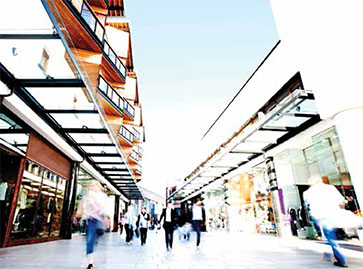
Customers are Our Experts for Innovation
People find new ways to integrate software with other solutions
- By Christian Bohn
- Mar 01, 2013
 Video surveillance software can help to count people traffic, register scratches on cars or show which customers need help in the store. End users find new, clever and creative ways to use open-platform software and integrate it with other solutions.
Video surveillance software can help to count people traffic, register scratches on cars or show which customers need help in the store. End users find new, clever and creative ways to use open-platform software and integrate it with other solutions.
User Driven Solutions
This is the foundation for the concept of user-driven innovation. User-driven innovation happens when a company examines their users’ needs and develops a solution for them, granting peace of mind. For example, an infrared camera monitoring in the dark can provide worry-free sleep.
With open-platform surveillance, it is often end users, with their resourcefulness and expertise, who meet needs when they integrate software into their own unique solutions. In addition to solving the original needs the company had when they initially purchased the software, they can progress software use to solve many other challenges faced by organizations, including reducing production costs and increasing the quality of the products or services they offer. This could be called user-driven innovation, version 2.0.
Cars Unscathed
The following examples of customer innovation lead to inevitable advances in the surveillance field in the future.
A customer purchased a solution to monitor a car showroom at night to prevent thefts. But soon they found other ways to use the video surveillance software and cameras. The company is now taking pictures of all the cars that customers test drive. By getting video before and after the cars leave the area, they can document whether any scratches on a car were inflicted during the trip or whether they were there before the car left the showroom.
The company also uses cameras in the reception area. When a customer calls to speak with an employee, the receptionist can use Milestone’s XProtect software to see whether the employee is present or not. In addition, the cameras identify customers who need attention in the expansive showroom.
This end user has obtained both a tool that can help to prevent thefts at night and a solution to meet other business challenges they contend with.
Optimum Store Design
Another example of user-driven innovation was the installation of intelligent monitoring equipment in a Danish retail chain. This could link transactions from cash registers with video surveillance to further support loss prevention management. The integrated system’s quick resolution of payment disputes with customers and employee errors. Besides helping to reduce shrinkage, the video surveillance solution also is used to count the number of customers in the store. Each store can then compare this with their turnover and adjust work schedules to ensure proper staffing.
The entire solution works both as an analytical and managing tool to improve operations. In addition, floor planners use live video that can be seen from the main office to ensure that a store’s layout is implemented as planned, whether goods are placed correctly, and so on. Plus, the remote access saves them both time and travel expenses. Stores can use video surveillance to monitor customer movement patterns and optimize store layout and location of commodity groups and special offer products for optimal customer flow and increased revenue.
So, should Milestone have not thought of this? In both the above cases, it is the customer who uses the software in its specific environment in creative ways that add value to the individual business. The customer is an expert in his own business and, with the open-platform software, we provide them with extensive opportunities for integration with other systems that create value for them individually.
Future Video Surveillance
We think a lot about where video surveillance will go in the future. We see how the confidence of residents in disadvantaged neighborhoods increases when installing video surveillance, and we believe that video surveillance will become more common as a tool for positive changes both in public and private areas.
Video surveillance will be increasingly pushed from mobile phones. For example, the police will begin streaming video from responders’ mobile phones at accident scenes so emergency centers can provide even better service, just as police are already using citizen’s own phone-captured photos and video to help identify perpetrators.
Privately, people will be able to use their phone cameras for mobile video surveillance and live streaming to YouTube, for example. There is now a trend that more devices are equipped with computing power and network access. In the future, video surveillance will become part of the standard equipment in portable devices.
This article originally appeared in the March 2013 issue of Security Today.